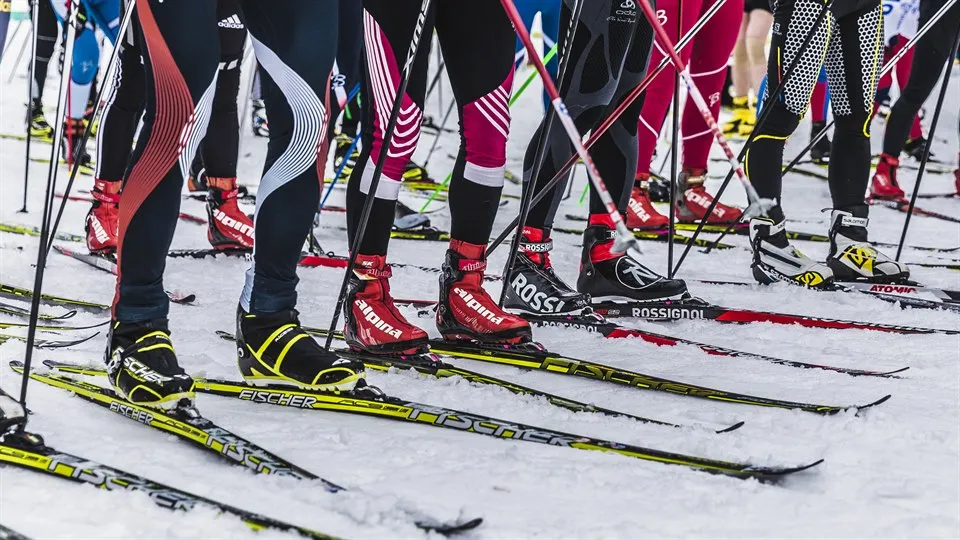Athlete Monitoring in Cross‑Country Skiing
During the 2018-2019 season, the Swedish Winter Sports Research Centre and the Swedish Ski Federation will be commencing a longitudinal project focusing on athlete monitoring whithin cross-country skiing. The aim is to better understand the complex relationships between training load, daily stress, recovery, illness and other factors that affect performance. The findings will be analysed and presented in a way that can help skiers to train and perform better.
A number of factors affect performance in cross-country skiing. Some can be controlled, such as training load, recovery, diet, and sleep, while others are more difficult to control, such as illnesses and injuries. Better management of the factors that can be controlled can result in fewer days lost to illness and injury. By monitoring as many of these factors as possible, one can understand how they affect each other and, in turn, improve performance. One way to do this is by using an athlete monitoring system.
What is athlete monitoring?
Athlete monitoring is the monitoring of factors that affect an athlete's ability to perform. What one chooses to register can depend on the athlete's age, experience, and available resources, but common to all monitoring is that the collated information is based on the training performed (Bourdon, 2017). In addition, complementary information about sleep, stress, well-being, symptoms of illness or injury, fitness, performance and biological tests can contribute to paint a more detailed picture of an athlete's response to training. Whatever information one chooses to collect, one should evaluate each athlete individually, regularly and over time.
Why use athlete monitoring?
The reason why you want to monitor more than just the training load of a cross-country skier is to increase knowledge about how different factors affect training and competition outcomes. This can potentially maximize the positive effects of the training while minimizing the risk of illness, injuries and overtraining, for example (Bourdon, 2017). For positive adaptations to occur there has to be a balance between the load that the skier is exposed to and the necessary recovery (Mattveyev, 1981). This load is not only a part of the exercise that is performed but is a combination of all the positive and negative stressors you face each day, such as family, school, work, travel, media, etc. Therefore, it is important to have control over the total load.
An additional aspect is that a monitoring system facilitates communication between athletes and coaches. Individual athletes often train alone or with friends and the information contained in the monitoring system gives the coach a better basis for analyzing and adjusting the training even if the athlete is not in the same place. In addition, the information can be used to evaluate whether the work that has been completed has produced the desired effect. Finally, by systematically registering training, the athlete and the coach have documentation of the time and effort that has been put into the training, which may be positive for subsequent motivation and focus.
How does the athlete monitoring process work?
The monitoring process can be divided into three different phases:
- The first phase is data collection. This is done primarily by the athlete filling in their training diary. In addition to training measures such as time, intensity, distance and experienced effort, information on sleep, well-being, fitness, travel, illness, injury, etc. are also registered. The training diary is also supplemented with information from, for example, competitions and regular physiological tests and surveys.
- The second phase is the analysis of the collected data itself. Here you can use traditional statistical methods, but now also more advanced modeling and machine learning to find meaningful changes and contexts. With today's modern technology, this phase can happen more or less automatically.
- The third and perhaps most important phase is the feedback phase. Here, the collected information is presented clearly and concisely so that it can easily be used by athletes and coaches to make adjustments.
It is important to understand that the information obtained from a monitoring system depends on the quality of the information submitted, which the skiers should have in mind when they complete their training diaries. In conclusion, it is central to emphasize that a monitoring system is not a substitute for a coach, but rather a tool that the athlete and coach can use to customize and plan training in a better way.
During the 2018-2019 season, the Swedish Winter Sports Research Centre and the Swedish Ski Federation will be commencing a longitudinal project focusing on athlete monitoring whithin cross-country skiing. The project aims to increase knowledge concerning the complex relationships between different factors that affect performance and thus help skiers to perform better.
If you want to learn more or have questions regarding the project, do not hesitate to contact us!
References
Bourdon et al. (2017). Monitoring athlete training loads: consensus statement. Int J Sports Physiol Perform 12:161-170.
Gabbet et al. (2017). The athlete monitoring cycle: a practical guide to interpreting and applying training monitoring data. Br J Sports Med. 51:1451-1452.
Mattveyev (1981). Fundamentals of sports training. Moscow, Russia: Progress Publishers.

